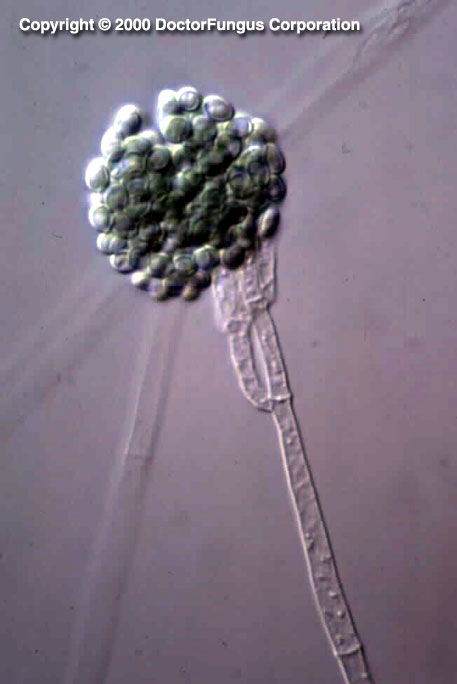(described by Corda in 1840)
Taxonomic Classification (of the telemorphs of Gliocladium spp.)
Kingdom: Fungi
Phylum: Ascomycota
Order: Hypocreales
Family: Hypocreaceae
Genera: Nectria, Hypocrea, Nectriopsis (telemorphs of Gliocladium)
Description and Natural Habitats
Gliocladium is a mitosporic filamentous fungus which is widely distributed in soil and decaying vegetation [1709, 2202]. It is commonly considered as a contaminant.The older (obselete) names for this genus are Acrostalagmus, Isaria, and Verticillium. The telemorphs of the genus Gliocladium are included in the genera Nectria, Hypocrea, and Nectriopsis [2202].
Species
The genus Gliocladium contains several species. The most commonly known ones are Gliocladium penicilloides, Gliocladium virens, and Gliocladium roseum, and Gliocladium deliquescens.
<2>Synonyms
See the summary of telemorph-anamorph relations for the Gliocladium spp.
Pathogenicity and Clinical Significance
Gliocladium has not been reported as the causative agent of any disease in man or animals. Gliotoxin is a metabolite of Gliocladium deliquescens [1195]. The significance of detection of gliotoxin is yet to be determined.
Macroscopic Features
Gliocladium spp. produce rapidly growing, spreading and cottony colonies. The growth covers the whole surface of the plate in about a week. From the front, the colonies are white to cream initially and may become pink to rose or dark green as they mature. The reverse is colorless, white, or yellowish [1295, 2202].
Microscopic Features
Gliocladium produces hyphae, conidiophores, phialides, and conidia. Hyphae are septate and hyaline. Conidiophores are erect and branch repeatedly at their apices. The terminal branches give rise to flask-shaped phialides. Conidia are one-celled, ovoid to cylindrical, accumulating in a single, terminal, large ball, or occasionally in a loose column. A penicillus bearing a single, large, slimy ball of one-celled conidia is typical of the genus Gliocladium.
Compare to
Penicillium
Phialocephala
The hyphae, conidiophores, and phialides of Gliocladium resemble those of Penicillium. However, while the conidia of Gliocladiumclump together at the top to form a ball-like structure, those of Penicillium produce chains [1295].
Laboratory Precautions
No special precautions other than general laboratory precautions are required.
Susceptibility
No data are available.

